2025
Comparably’s Best Company Outlook
* Providing engineering services in these locations through SWCA Environmental Consulting & Engineering, Inc., an affiliate of SWCA.

From the experts we hire, to the clients we partner with, our greatest opportunity for success lies in our ability to bring the best team together for every project.
That’s why:
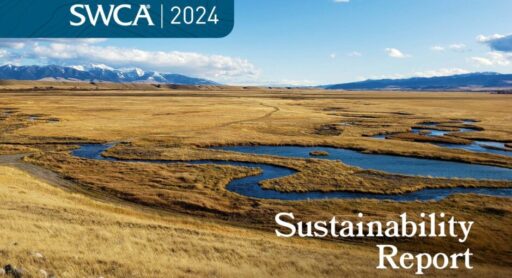
At SWCA, sustainability means balancing humanity’s social, economic, and environmental needs to provide a healthy planet for future generations.
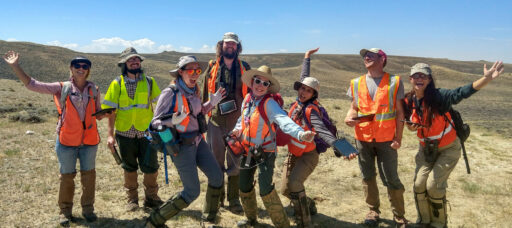
SWCA employs smart, talented, problem-solvers dedicated to our purpose of preserving natural and cultural resources for tomorrow while enabling projects that benefit people today.
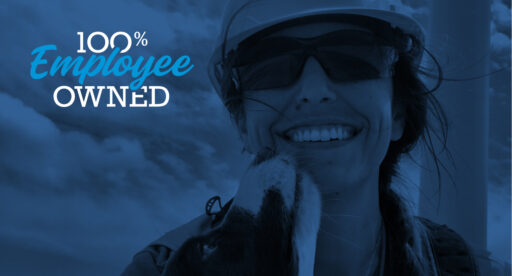
At SWCA, you’re not just an employee. You’re an owner. Everyone you work with has a stake in your success, so your hard work pays off – for the clients, for the company, and for your retirement goals.
Celebrating Archaeology Week: Meet the Talent Behind the Trenches as they Debunk Myths
Ask any archaeologist what questions they frequently get, and they will likely mention at least one of these:
“Do you dig up dinosaur bones?” (No, that’s paleontologists!)
“Have you ever found buried treasure?” (Depends on what you consider treasure!)
“Are you like Indiana Jones?” (By no means. We’re scientists, not adventurers!)
“Isn’t everything already discovered?” (Far from it. Scientific inquiry is boundless.)
“Are you going to take my land if you find something important?” (Impossible. Private property remains private; we work with landowners on important finds.)
These questions highlight common misunderstandings about archaeology, a field that is often misrepresented and misunderstood.
Archaeology, and more broadly, cultural resources, is more than just digging in the dirt — it’s about uncovering the untold stories of humanity, preserving history, and connecting with the past in ways that shape our understanding of the present. Cultural resources include cultural resources management and planning, historic preservation, Indigenous relations and ethnography, and more. At SWCA, we are proud to celebrate Archaeology Week by highlighting the incredible work of our experts who bring passion, expertise, and a deep respect for cultural heritage to every project they undertake. While Archaeology Week is traditionally celebrated at the state level across the United States, SWCA is taking a moment to celebrate the exceptional work of our archaeologists on a national scale.
Join along as we connect with Robin Cordero, Anna Gilmer, and David Markus, three talented members of SWCA’s cultural resources team, to celebrate their stories, de-bunk archaeology myths, and uncover the dynamic roles of present-day archaeologists (who look more like you than they do Indiana Jones).
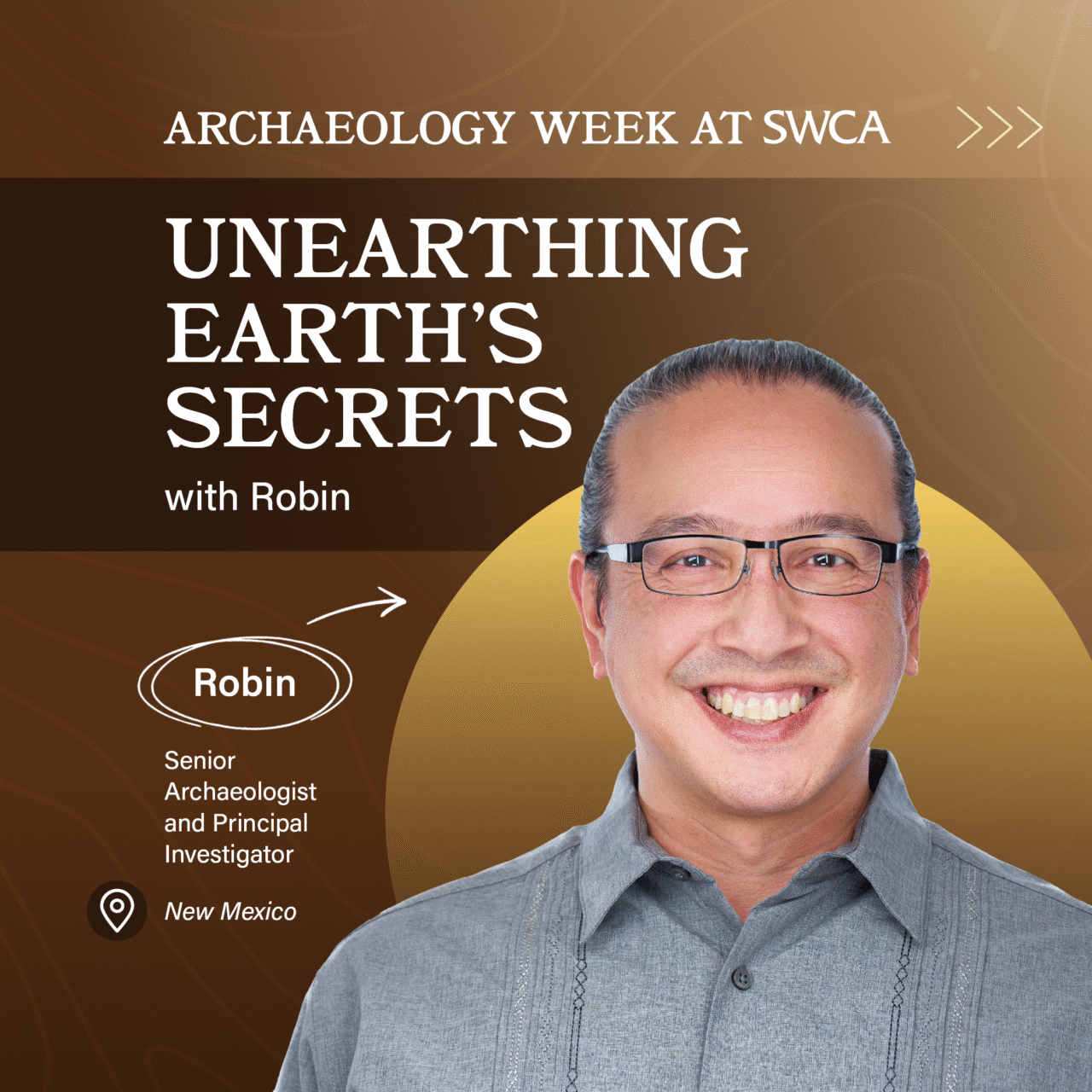
For Senior Archaeologist and Principal Investigator, Robin Cordero, the journey into archaeology began with a childhood fascination sparked by a National Geographic article on Pompeii. “I saw pictures of skeletons and thought, ‘Wait, this is a career? I could do this!’” Robin recalls. That early inspiration led him to pursue anthropology in college, where he gained hands-on experience analyzing human skeletons and animal remains, setting the foundation for a career in bioarchaeology and zooarchaeology.
Robin’s work at SWCA focuses on cultural resource management (CRM), a field that combines archaeological expertise with a mission to preserve history in the face of modern development. “Archaeology is a destructive science.” Robin explains. “When we excavate, we’re destroying the physical aspect of the historical record. In CRM, we excavate because there’s no other option, and we aim to recover as much as we can before it’s lost.”
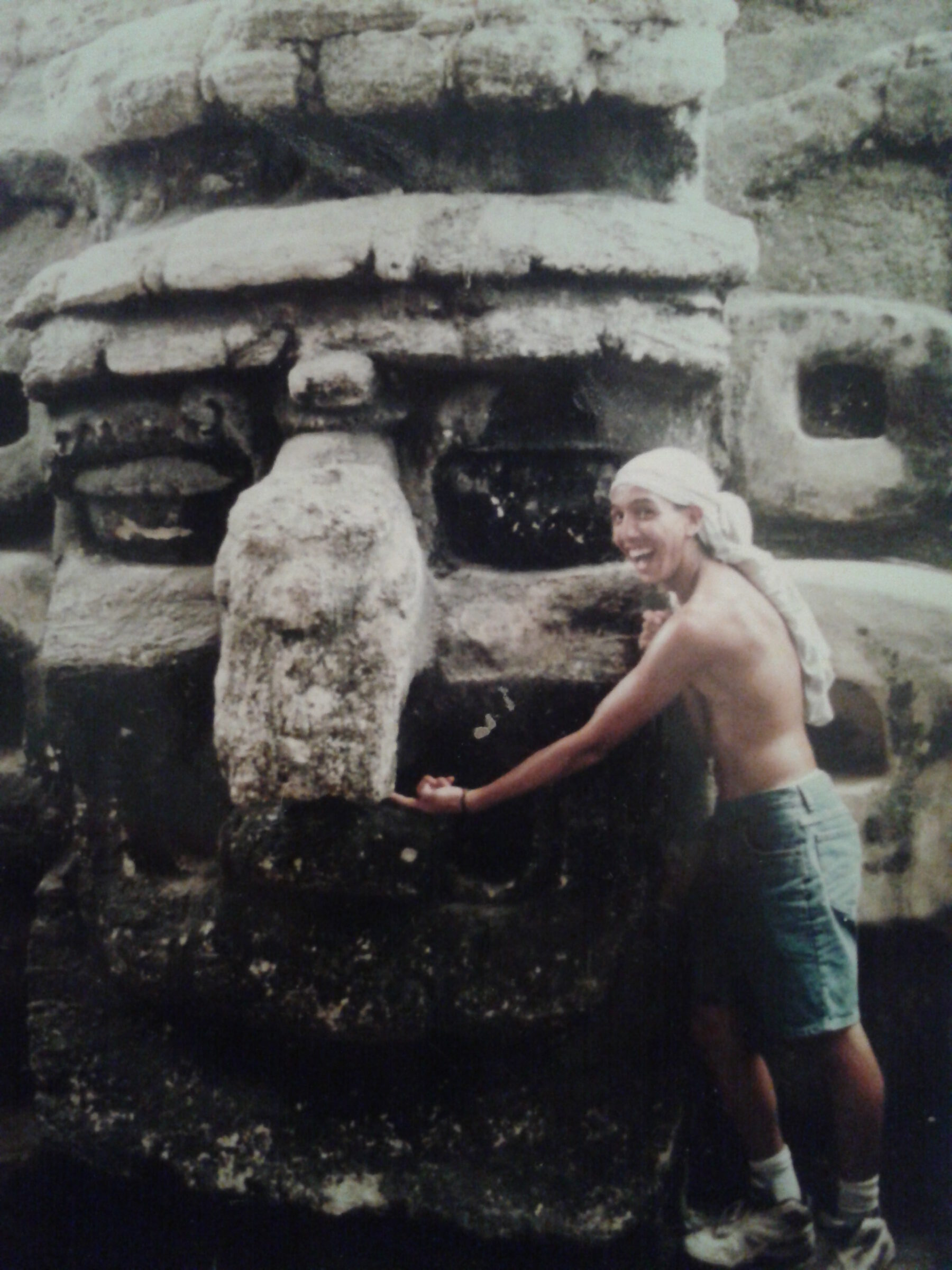
Robin Cordero on an archaeology field school visit to Tikal, Guatemala
A common misconception about archaeology is that it merely involves digging into the ground without much forethought. Robin clarifies, “Most people don’t realize there’s a series of steps you have to go through to stick a shovel in the ground. And it entails a lot of archaeological theory where we develop a series of methods and techniques to match up with the kind of research questions that we’re asking.”
One of Robin’s most exciting projects was a recent excavation in Santa Fe, New Mexico, where his team uncovered evidence of a Spanish Colonial/Mexican period defensive trench. “This is the first evidence in decades of downtown Santa Fe excavations that any archaeologist has found of the Spanish Presidio,” he shares. “It opens a whole avenue of research questions for the early history of Spanish settlement in Santa Fe.”
Robin also emphasizes the importance of collaboration with Tribal communities, particularly when working with sensitive sites like ancestral villages. During a recent project with the Georgia O’Keeffe Museum, Robin’s team included Tribal members as part of the field team, including their voices and perspectives integrally in the CRM process. “It’s about making sure their history isn’t just taken from them but preserved in a way that respects their heritage,” he says.
For Robin, the diversity at SWCA is another highlight of his work. “This is the first place I’ve worked where I get to collaborate with fellow Asian American archaeologists,” he notes. “The diversity here is phenomenal, and it’s been one of the biggest selling points for me.”
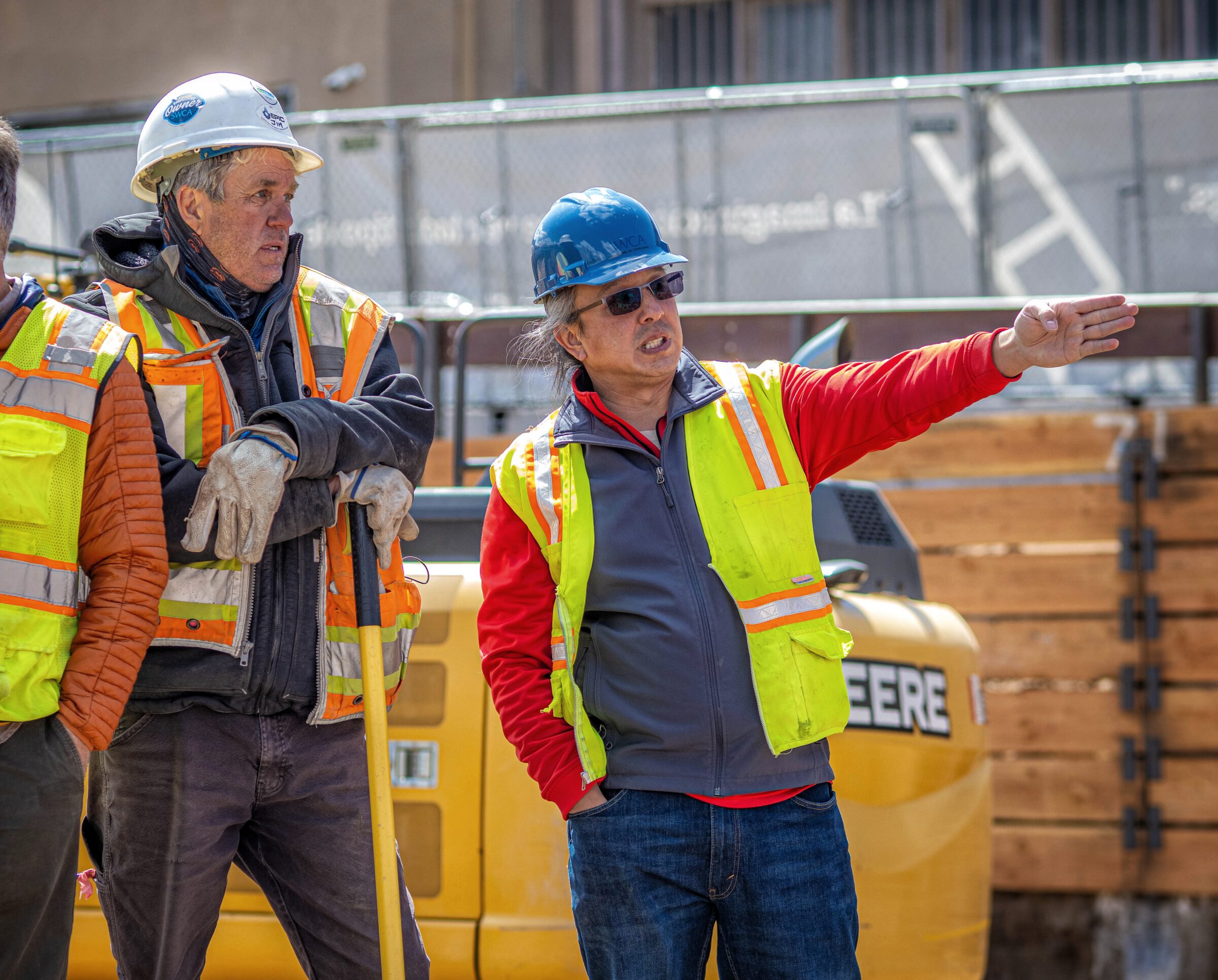
Robin Cordero and Jim Gallison at the Georgia O’Keefe excavation site in Santa Fe, NM
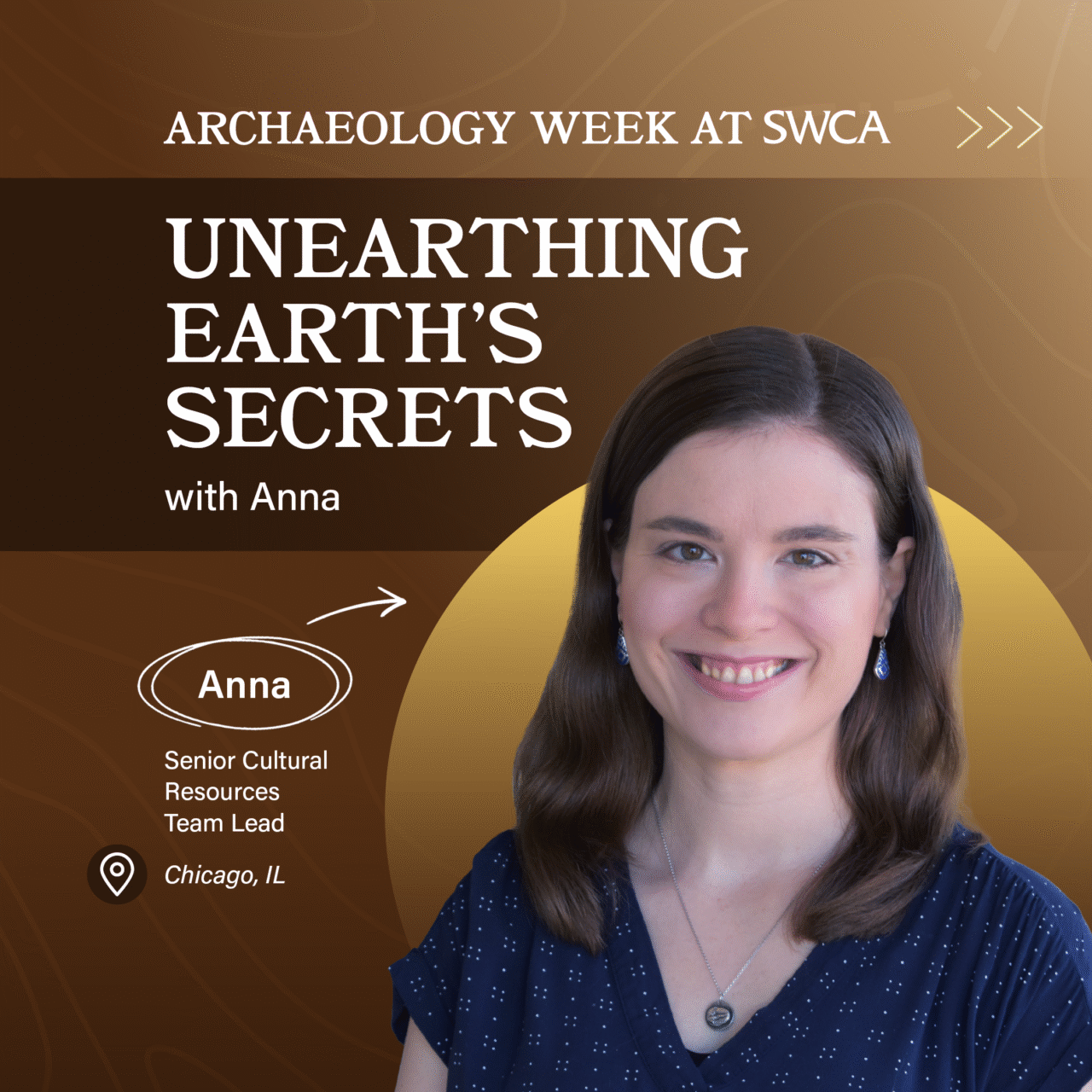
Anna Gilmer, Senior Cultural Resources Team Lead at SWCA’s Chicago office, has been a pivotal member of the team since 2017. She began her journey with SWCA as an on-demand field technician and has since leveraged her master’s degree in anthropology, with a focus on geoarchaeology, to take on increasingly broader roles. Her expertise in analyzing soils, sediments, and artifacts enables her to unravel the context and integrity of archaeological sites, providing insights into how sites were buried and whether they have been disturbed.
Driven by a practical mindset, Anna opted for a career in consulting over academia or museum work. She relishes the challenge of diverse projects and the opportunity to solve case-specific problems. As Anna puts it, “I’m a very practical person. I like the idea of getting a project that is its own confined case study. We work that case, get all the data we need to complete it, solve that case, and move on to the next one. I like how consulting continues to give us new challenges and new adventures, and you can go from one project to the next and bring new insights and new lessons learned.”
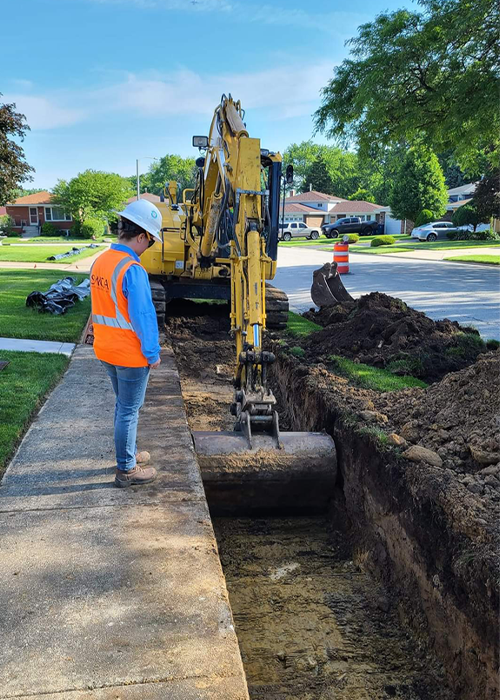
Anna Gilmer monitoring a trench excavation within an archaeological site in the Chicago suburbs
Anna addresses common misunderstandings about cultural resources, noting, “I think clients often become concerned when we find cultural resources. Finding cultural resources doesn’t mean that the project can’t proceed. Not all cultural resources are considered ‘significant’ and different resources can mean different things. Sometimes it provides an opportunity to engage with another stakeholder in a new way. It’s our role to help clients navigate through the cultural resources landscape.”
Her expertise in geoarchaeology goes beyond examining artifacts. “Geoarchaeology means that I don’t just look at the artifacts at a site. I look at the soils and sediments that the artifacts are found in. Geoarchaeologists will look at everything from the individual grain of sand to the full landscape to determine if the site is in good context and if the site is intact. Our research questions typically work to answer questions like how the site was buried, what the landscape was like at the time people lived there, and what disturbances may have happened to the artifacts after the site was buried.”
Looking ahead, Anna is excited about the continued growth of the Cultural Resources team in Chicago. “We have grown significantly in the last few years and the work we’re doing is growing more varied. It covers more states, and the size of the projects are becoming larger. The more complex the project, the more we get to practice our archaeological skills, engage with stakeholders in meaningful ways, and think creatively, and that is what I enjoy doing most.”
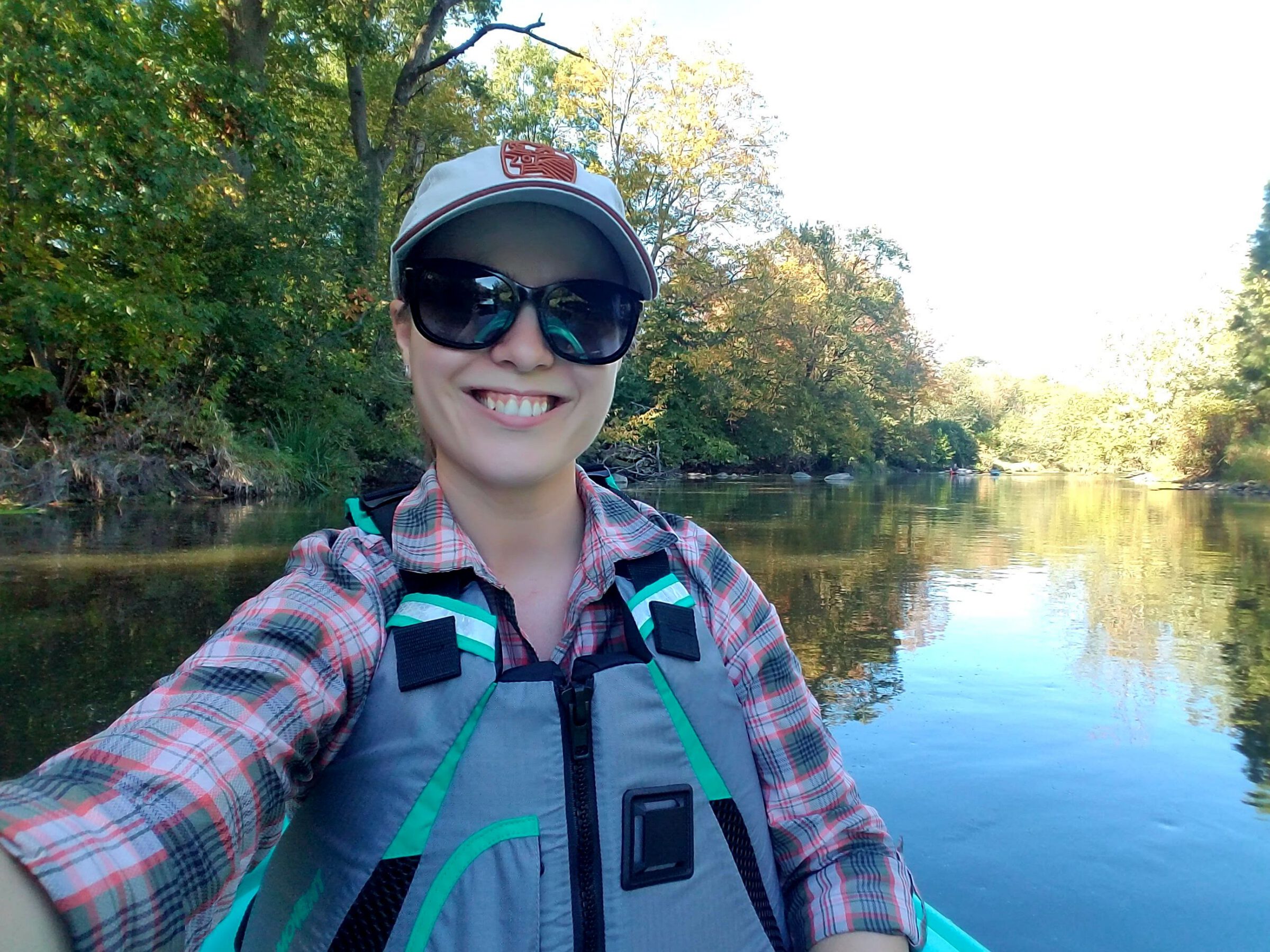
Anna Gilmer kayaking along the DuPage River in Northern Illinois
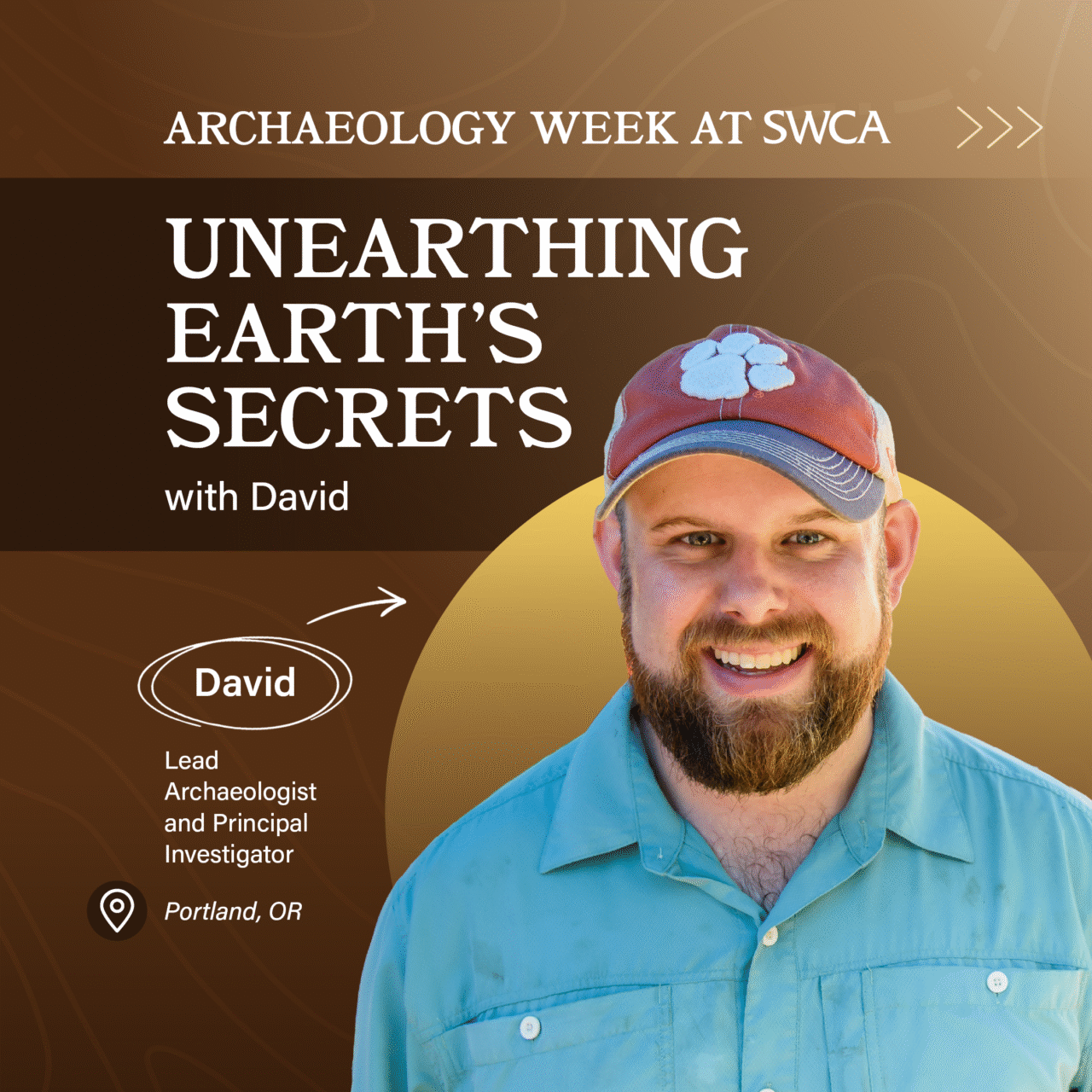
David Markus, a Lead Archaeologist and Principal Investigator at SWCA’s Portland office, transitioned from academia to cultural resource management (CRM), where he found his passion in the regulatory and technical aspects of archaeology. Reflecting on his expertise, David shares, “I’m trained as a historical archaeologist. I deal with material culture and time periods from about 1550 forward. Usually, all our projects have something historic come up, and I get to play with artifacts and think about how to interpret them.”
Having previously served as an assistant professor at Clemson University, David appreciates the collaborative nature of consulting, in contrast with the solitary work he experienced in academia. He highlights the value of archaeology, stating, “We place value on this stuff not just as objects, but as cultural information, a legacy of history and the landscape. We protect these resources not because they have any intrinsic monetary value, but because we value protecting our history and culture collectively.”
David also underscores CRM’s role in producing most archaeological data in the United States, contributing to the scientific record and preserving cultural heritage. David emphasizes the importance of understanding the big picture: “On paper, we develop a scope of work. We dig holes. We help clients determine which permits to apply for. We’re going to liaise with Tribes and with agencies. But at the end of the day, it’s about helping clients understand how they are going to continue the historical trajectory and narrative of a site. History is not static. We’re part of it.”
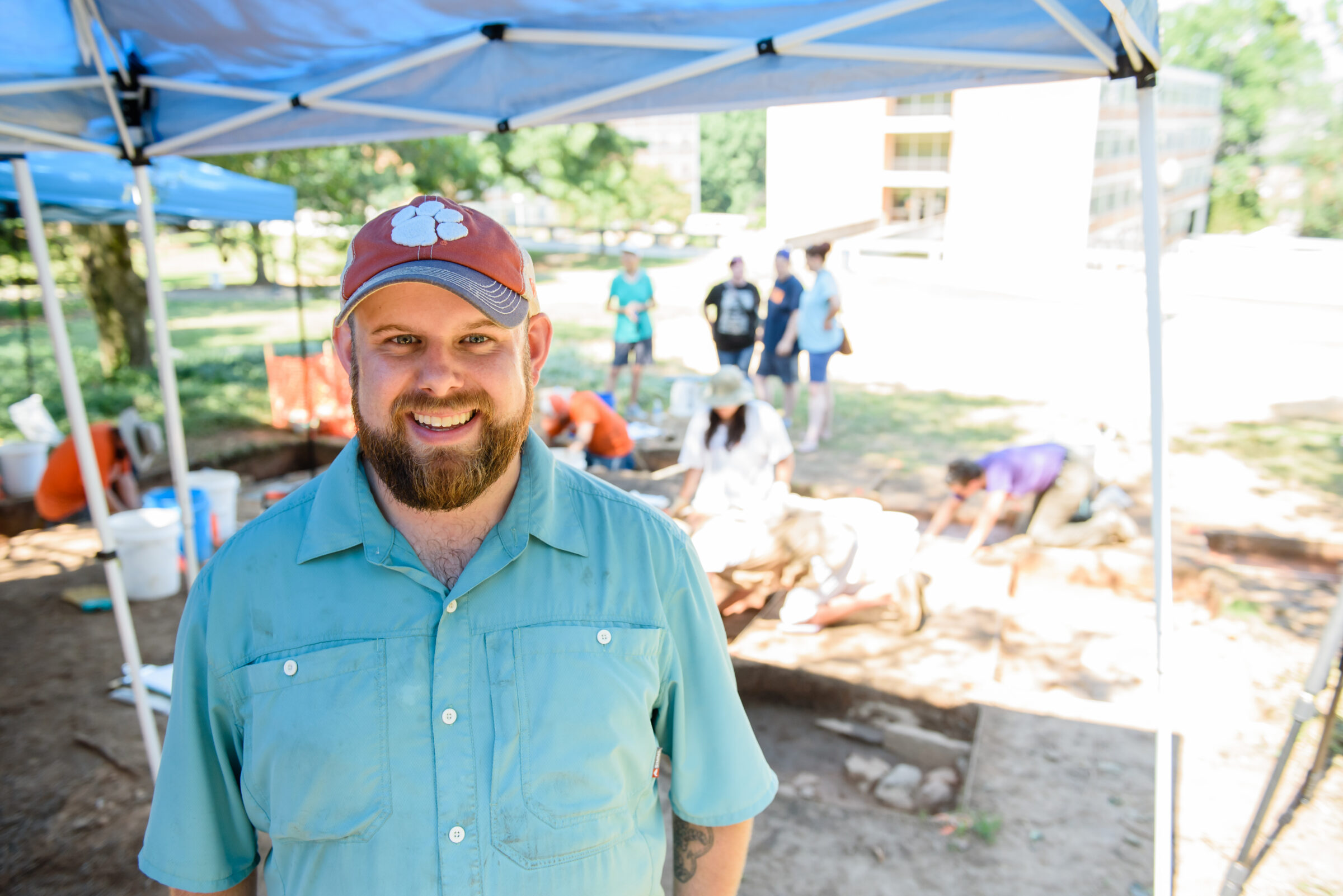
David Markus in action at an excavation site
Addressing common misunderstandings about the regulatory process, David clarifies, “People generally think we have more agency and authority over what gets done with the materials we find. Our step in the process is to consult and make recommendations and do the work to make sure that we’re meeting standards. Our role is not to dictate. We’re not a final authority. We’re here to partner with clients to shepherd them through the regulatory process.”
David praises SWCA’s commitment to scientific research, employee ownership, and fostering a collaborative environment that empowers staff to pursue meaningful work. He notes, “We can be a one-stop shop for clients. As a multi-service line company between natural resources and cultural resources, and everything that goes underneath those huge umbrellas, we can bring all those pieces together to create a holistic scientific picture.” This approach aligns with SWCA’s mission to balance compliance with impactful scientific contributions.
Highlighting the significance of employee ownership, David explains, “We’re heavy on the science angle. There is a lot more agency with staff to say, ‘I want to do these things, and I’m empowered to do these things because I have an ownership stake in the company.’ It is us collectively, as employees, dictating how the company faces the headwinds rather than a bottom dollar, a venture capitalist, or outside funding.”
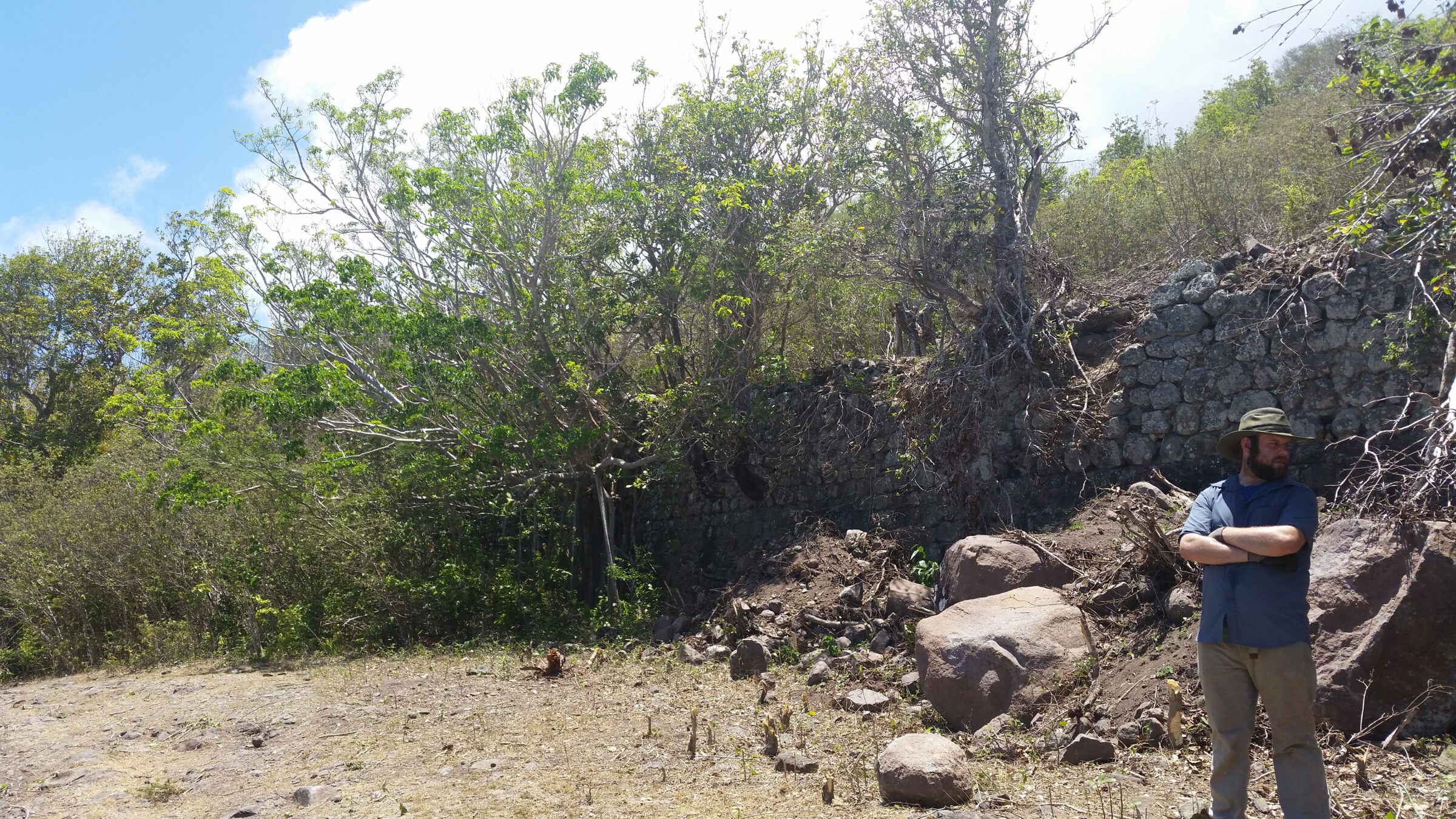
David Markus in the field.
At SWCA, our archaeologists are not just scientists — they are storytellers, educators, and advocates for cultural preservation. Whether uncovering the remains of a defensive trench associated with a 1700s Santa Fe Presidio, collaborating with Tribal communities, or designing innovative methods for excavation and analysis, their work ensures that the stories of the past are not lost to time.
As we celebrate Archaeology Week, we invite you to learn more about the incredible work being done by the SWCA team and archaeologists at large. Join us in honoring the dedication and expertise of the archaeologists who make it all possible.
Ready to explore a career in archaeology at SWCA? Learn more about career opportunities by visiting swca.com/careers.